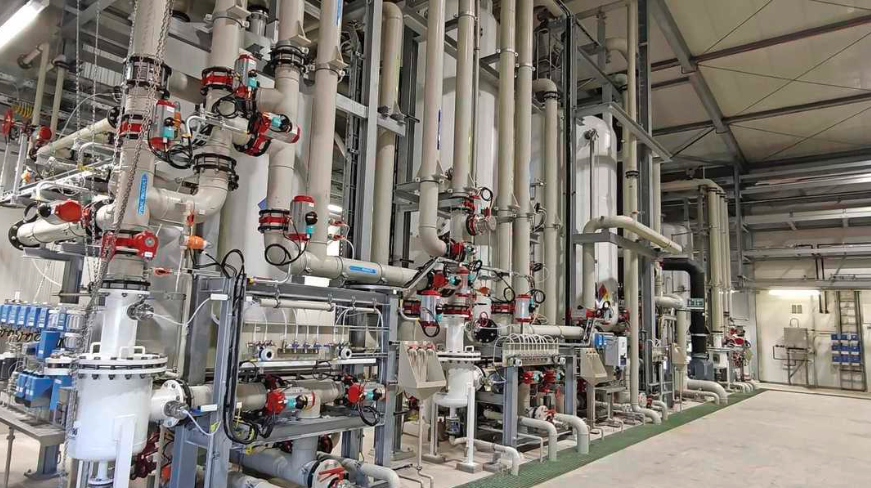Yara and Evides Industriewater make fertilizer from wastewater
With a push of the red button, mayor of Terneuzen Erik van Merrienboer, director Luc Cattoir of Yara and director Jan Robert Huisman of Evides Industriewater opened the new demining water and purification street. Both streets ensure that Yara can reuse even more water and that less nitrogen is discharged into the Canal from Ghent to Terneuzen. Fertilizer granules are now even made from the wastewater.
Water is crucial
Water is crucial for Yara in Sluiskil. It has no fewer than four applications. First, it supplies half of the hydrogen. The other half of the hydrogen currently still comes from natural gas and the future ambition is to make all hydrogen from water. In addition, water is needed to make liquid products such as AdBlue or ammonia water, which prevent nitrogen emissions in other sectors. Water is also needed to make steam and finally it is used for cooling processes. “The new streets enable us to work more sustainably and flexibly. Two pillars that determine the future of our site,” says Luc Cattoir, General Manager of Yara Sluiskil.
The total amount of pure water that Evides Industriewater produces for Yara Sluiskil is more than 5 million cubic meters per year. This makes it the most important raw material next to natural gas and air. Evides obtains water from three sources, namely rainwater from the Meuse, infiltrated surface water and residual water from various factories on the site. The new treatment plant allows even more residual water to be processed, up to more than a third of the total quantity. This allows Yara to once again achieve an objective of the Customized Agreements with the government.
Evides designed, built and financed the new demining water and purification line in consultation with Yara and is also responsible for the daily operations. Yara takes the water in accordance with agreements made. This concept has been applied since 2007 and suits both parties well. “Water plays an important role in making the industry more sustainable. We are taking great steps with Yara in collaboration and with innovative technologies. In this way we increase water reuse at the Yara site. Yara and Evides are proud of the sustainable water solutions that we have jointly created and with which we contribute to a more circular industry.” says Jan Robert Huisman, director of Evides Industriewater.

In addition to the demineralization line, investments have also been made in the nitrate factories by installing a purification line. The storage tanks and ion exchangers that have been newly built there ensure that more residual water can be processed. This means that the most damaging nitrogen flow is a thing of the past and significantly less nitrogen needs to be discharged into the canal. “What used to be waste is now being reused to make fertilizers. A good example of circularity where we achieve less nitrogen discharge, make circular products and can also save five percent of water," explains Luc Cattoir. An additional advantage of the investments is that they create more flexibility, making production processes in different factories on site less dependent on each other.